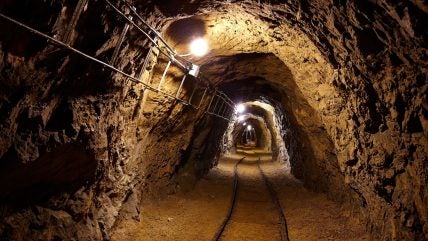Sign up for daily news updates from CleanTechnica on email. Or follow us on Google News!
The search for a new, low-cost alternative to the familiar lithium-ion battery is heading off in all sorts of different directions. One key area of interest is sodium, the earth-abundant ingredient that makes up about 40% of simple table salt. Sodium is heavy, though. So is salt, for that matter. Nevertheless, sodium batteries are relatively inexpensive and free from thorny supply chain issues, and they are beginning to bust into the mainstream market.
Sodium Batteries For Just About Everything
Sodium is abundant, all right. The Royal Chemistry Society calls it the “sixth most common element on Earth,” making up about 2.6% of the crust of the Earth.
That’s all well and good, but sodium hits a stumbling block in terms of batteries for electric vehicles, where lower weight and smaller size are at a premium.
“Sodium is a heavier element than lithium, with an atomic weight 3.3 times greater than lithium (sodium 23 g/mol vs lithium 6.9 g/mol), notes Shazan Siddiqi of the research firm IDTechEx.
That puts sodium at a disadvantage right then and there, though Siddiqi has some things to say about that.
“However, it is important to note that lithium or sodium in a battery only accounts for a small amount of cell mass and that the energy density is mostly defined by the electrode materials and other components in the cell,” he said. “Hence, while current sodium-ion batteries have relatively low energy densities, there is the potential for this to increase in the coming years.”
It looks like the coming years are now. Last fall, CleanTechnica took note when the Swedish battery maker Northvolt hooked up its sodium-ion battery with the Chinese electric vehicle maker BYD. Now here comes the US startup Acculon adding more fuel to the sodium fire.
If all goes according to plan, Acculon expects production of its new sodium-ion batteries to begin at the pilot scale this spring, and hit the scale of 2 gigawatt-hours by the middle of this year.
“Importantly, sodium-ion batteries are free from conflict minerals or premium input materials like lithium carbonate or cobalt, increasing their sustainability profile among advanced battery chemistries,” Acculon stated in a press release on January 4.
Acculon already has a wide field of energy storage experience under its belt, and it is looking at a wide range of applications for the new battery.
“Acculon is poised to contribute to a new era of electrification in material handling, robotics, autonomous guided vehicles, port vehicles, golf carts, marine, aviation, power tools, powersports, lawn and garden, community electric vehicles, aerospace, agriculture, and more,” the company enthuses.
Better Sodium Batteries For Electric Vehicles
If you caught that thing about port vehicles, golf carts, and community electric vehicles, that’s important. Though sodium batteries generally have a shorter driving range than their lithium-ion counterparts, they can still offer low-cost electrification solutions for situations in which a more expensive, premium battery is not worth the extra cost.
Still, the search continues for a sodium battery that can provide enough range to attract drivers looking to buy a highway-worthy electric vehicle.
That day, too, is coming closer. Last week, Argonne National Laboratory provided an update on its sodium-ion battery research, and things are looking good.
In the early 2000’s, Argonne developed a cathode that was taken up by General Motors to launch its Chevy Volt hybrid and Chevy Bolt EV onto the road with lithium-ion batteries on board, and the lab is looking to out-do itself with sodium-ion technology.
“Researchers at the U.S. Department of Energy’s (DOE) Argonne National Laboratory have invented and patented a new cathode material that replaces lithium ions with sodium and would be significantly cheaper,” the lab stated in a press release on January 8.
“The cathode is one of the main parts of any battery. It is the site of the chemical reaction that creates the flow of electricity that propels a vehicle,” they added, helpfully.
By significantly cheaper, they mean significantly cheaper. “Our estimates suggest that a sodium-ion battery would cost one-third less than a lithium-ion one,” said Christopher Johnson, a senior chemist and Argonne distinguished fellow at the lab.
The cathode that eventually made its way into lithium-ion batteries for the Volt and Bolt was structured in layers. The team deployed a similar architecture for their new sodium-ion battery, deploying layers of a sodium nickel-manganese-iron oxide.
If you don’t see cobalt in that formula, that’s no accident. “The absence of cobalt in the cathode formula mitigates cost, scarcity and toxicity concerns associated with that element,” Argonne explains.
“Sodium is far more naturally abundant and easily mined than lithium,” the lab adds. “Furthermore, besides sodium, the cathode material predominantly contains iron and manganese. Both elements are globally abundant and not on the endangered list.”
Sodium-ion batteries also retain charging performance in sub-freezing temperatures, the lab observes.
Another factor helping to push sodium-ion batteries into the market at a relatively rapid pace is their compatibility with existing lithium-ion battery manufacturing and battery management systems. That’s a contrast with flow batteries and other energy storage technologies that require their own unique systems.
How Far Can Sodium Go?
For electric vehicle applications, Argonne estimates a driving range of 180-200 miles for its new sodium battery, which is relatively short by today’s standards. However, a sodium-powered electric car could attract urban and suburban drivers on a limited budget, who don’t necessarily need a car for long distance driving.
We’ll soon see. The Argonne team has wrapped up the laboratory phase of the project and they are ready to put their new cathode to the test in a battery cell, to assess its performance for use in electric vehicles.
Meanwhile, Argonne notes that stationary energy storage is another ripe market for sodium-ion batteries.
Sure enough, over at the Pacific Northwest National Laboratory another kind of sodium battery is taking shape, which deploys a combination of aluminum and sodium in the form of a molten salt.
PNNL designed the new battery specifically to handle grid-scale energy storage for solar arrays. As described by the lab, the sodium-aluminum combo represents an improvement over grid scale sodium battery technology.
“We showed that this new molten salt battery design has the potential to charge and discharge much faster than other conventional high-temperature sodium batteries, operate at a lower temperature, and maintain an excellent energy storage capacity,” explained PNNL materials scientist Guosheng Li in a press release last year.
Aluminum comes into the picture as a low cost substitute for nickel. The lab notes that a similar nickel cathode is already commercially available. Subbing in aluminum was tricky, but the payoff is a faster charging time in addition to saving money.
The Long Road To Commercialization Might Be A Short One
The new battery also builds on previous research that involves a neutral molten salt reaction.
“The new discovery shows that this neutral molten salt can undergo a further reaction into an acidic molten salt. Crucially, this second acidic reaction mechanism increases the battery’s capacity,” PNNL explained.
PNNL cites a retention of 82.8% of peak charge capacity after 345 charge-discharge cycles. The battery is still in the early “coin cell” phase of development, so keep an eye out for updates on that score.
The PNNL team is currently aiming for a practical energy density goal of up to 100 watts per kilogram. That’s small potatoes compared to lithium-ion batteries, which clock in at the 170–250 level for EVs and other large devices.
“However, the new sodium-aluminum battery design has the advantage of being inexpensive and easy to produce in the United States from much more abundant materials,” the lab notes. That includes the aluminum wool, which can be sourced as scrap.
“With optimization, we expect the specific energy density and the life cycle could reach even higher and longer,” Li also adds.
More to the point, the new sodium battery is aimed at storing energy for a period of 10 to 24 hours. That’s significant because it meets the long duration energy storage goal of the US Department of Energy. Currently, lithium-ion batteries only provide for about four hours of storage. Though somewhat longer durations of 6-8 hours have been reported, the sodium battery would provide more hours at a lower cost, accelerating the ability of electricity grids to absorb more solar energy.
As for lab-to-market prospects, PNNL has already recruited the US firm Nexceris and its spinoff Adena Power to assemble a battery for the next phase of testing.
A similar design employing a nickel cathode as part of the system has been shown effective at commercial scale and is already commercially available.
Hold on to your hats. The PNNL team expects to improve the duration of the new battery and lower the costs, too, as the test phase continues.
Follow me @tinamcasey on Bluesky, Threads, Post, and LinkedIn.
Image: Schematic of a sodium-ion battery for grid scale energy storage, courtesy of Pacific Northwest National Laboratory.
Have a tip for CleanTechnica? Want to advertise? Want to suggest a guest for our CleanTech Talk podcast? Contact us here.
Our Latest EVObsession Video
I don’t like paywalls. You don’t like paywalls. Who likes paywalls? Here at CleanTechnica, we implemented a limited paywall for a while, but it always felt wrong — and it was always tough to decide what we should put behind there. In theory, your most exclusive and best content goes behind a paywall. But then fewer people read it!! So, we’ve decided to completely nix paywalls here at CleanTechnica. But…
Thank you!
CleanTechnica uses affiliate links. See our policy here.




